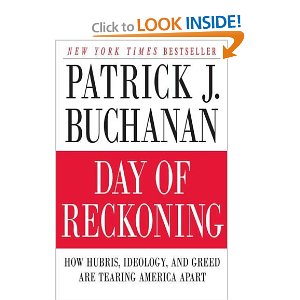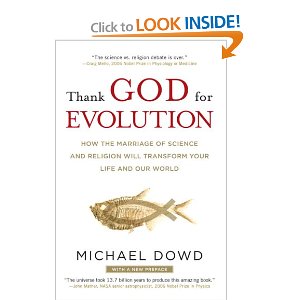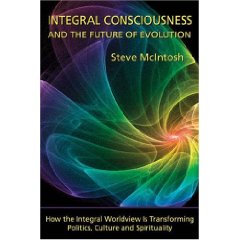 Perfect Catalytic & Summative Work for Our Time
Perfect Catalytic & Summative Work for Our Time
October 6, 2007
James Redfield
This is a remarkable book that was given to me as a gift by a Dutch entrepreneur who has himself been exploring the potential for higher energy and good intentions among individuals and groups. Although it has no bibliography, the story that it tells is quite remarkable and quite valuable as illumination and explication of the only viable path for a sustainable future for mankind, diverse species, and the planet.
I list other books below, in several categories (limited to ten hot links by Amazon, sorry), but would hasten to add that if I had to go back in time and read only one book to clarify for myself both the misguided negative energy path I have been following, and the ease of adopting an open good intentions energy sharing path, this is that book.
The bottom line on this book is that faith, blind faith, is not empowering, it is merely a panacea. Consciousness is the real experience; achieving higher consciousness is what the scriptures mean when they say “the truth shall set you free.” At the end of it all, this book encourages all well-intentioned individual to “lead the many to righteousness.”
I will summarize the nine insights to help those who might be skeptical of the value of this book, and would emphasize there is no substitute for “being there” with the book in hand, digesting its message page by page (very well presented by the publisher).
#1 Critical Mass. While the title emphasizes the number of individuals who are reaching critical mass (Cf. Cultural Creatives), the insight is about one's becoming conscious of coincidences that are not really coincidences, they are good intentions becoming manifest.
#2 Longer Now. This title naturally reminds us of Stewart Brand's Clock of the Long Now but is more pointedly about thinking in time in millennium terms, and more specifically, the fall of grace when the church was abandoned for science, and science led to secularity, and neither proved capable of understanding, much less managing, complexity (See also Collapse of Complex Societies).
#3 Matter of Energy. This insight focuses on the need to learn to perceive invisible energy (quantum physics at core, universe is pure energy). See also the DVD, What the *Bleep*). I especially liked the zen-like aspect of this chapter, on the energy that is generated from perceiving beauty in all its vividness, on seeing mini-environments, and on understanding that the physical universe is responsive to our intentions and expectations (See also The Social Construction of Reality, for a more academic approach).
#4 Struggle for Power. At the intermediate stage of development, humans compete for energy rather than realizing that collaborative or collective intelligence can create infinite energy, infinite wealth. Violence results, negative energy undermines the confidence and capabilities of groups (e.g. the five billion poor). This is where most of us are now.
#5 Message of the Mystics. Here the author emphasizes the role of mystical experiences in helping individuals make the leap from the past (see next item) and into a future of high consciousness that is inherently positive, forgiving, open, and engaging. The ability to receive and to give energy in a catalytic way, rather than draining energy in competition, is emphasized, as is the reality that love gives energy, and all forms of love are to be nurtured. The chapter emphasizes that the universe can provide all the needed energy to all without scarcity or competition, provided that mankind evolves to this higher consciousness of collaboration and sharing.
#6 Clearing the Past. In an unexpected twist, this chapter focuses on the family and the eras of parental control over children with good and bad results, generally emphasizing the bad as the parents competed in shaping the child. The author emphasizes the need to clear out the past, recognize the “dramas” that one plays out, and finally, in reconciliation, discover that inner direction and good intentions in accomplishments are all that are required to “live” righteously and happily.
#7 Engaging the Flow. Consciousness allows engagement, empowerment, and interactive evolution, the need to enjoin the negative, recharge often, stay full of energy, and stay in love with all things.
#8 The Interpersonal Ethic. Following up on 7, this insight opens by stating that love keeps us healthy, and that the relationship between stress or lack of love and disease cannot be underestimated. (Side note: I have noticed with interest that the Catholic Church is now teaching that sex after children and menopause is a form of co-evolution of man and wife, and not something to be denigrated simply because children are no longer possible.) This is the most complex and lengthy chapter of the nine. My notes include the need to recognize that fear and hate are based on misunderstanding. The chapter cautioned on becoming addicted to any single source or object of love, and to avoid at all costs treating children as anything other than young adults–eschew the myths and the adult entertainment, and go straight to the truth with children on all things. The chapter concludes by focusing on the need for every person to be fully in touch with both their masculine and feminine side, and emphasizes that love is at its best when both partners are complete in and of themselves, and sharing their completeness with one another. How we approach other people determines how quickly we evolve. Excluding anyone is negative. TRUTH is the common factor for common advancement.
#9 The Emerging Culture. In this final chapter, there is a sense of hope, an emphasis on slowing down, the thrill to be had from intentional interactive evolution (what Stewart Brand long ago recognized as Co-Evolution). This chapter focuses on the critical mass that are now enjoying their first deep intense introspection, on the emergence of the gift economy of abundance, and of full employment as necessary jobs are filled by multiple individuals. Most significantly for me as a proponent of public intelligence (decision support) in the public interest, “Constant exchange of information is our new economic orientation. Stewardship of the Earth will become integral to us all, and we can and should create Heaven on Earth. This chapter concludes that when we succeed, all religions will be clarified and de-conflicted and we will all become “one.”
Recommended books (see also my lists):
Hope
The Cultural Creatives: How 50 Million People Are Changing the World
Imagine: What America Could Be in the 21st Century
The World Cafe: Shaping Our Futures Through Conversations That Matter
The Clock of the Long Now: Time and Responsibility
Escaping the Matrix: How We the People can change the world
All Rise: Somebodies, Nobodies, and the Politics of Dignity (BK Currents)
One from Many: VISA and the Rise of Chaordic Organization
The Tao of Democracy: Using Co-Intelligence to Create a World That Works for All
Building a Knowledge-Driven Organization
History
Landscape of History
Fog Facts
Lost History
Cheating Culture
Missing
Voltaire's Bastards
Religion
Left Hand of God
Dowd on Evolution
Faith-Based Diplomacy
Other by Johnston
Wealth
Infinite Wealth
Wealth of Networks
Wealth of Knowledge
Revolutionary Wealth
There are so many others I could list. Let me end by emphasizing that this one book brought everything together for me, and is the first light on my new path toward helping the five billion poor learn and create wealth “one cell call at a time.”

![]()








